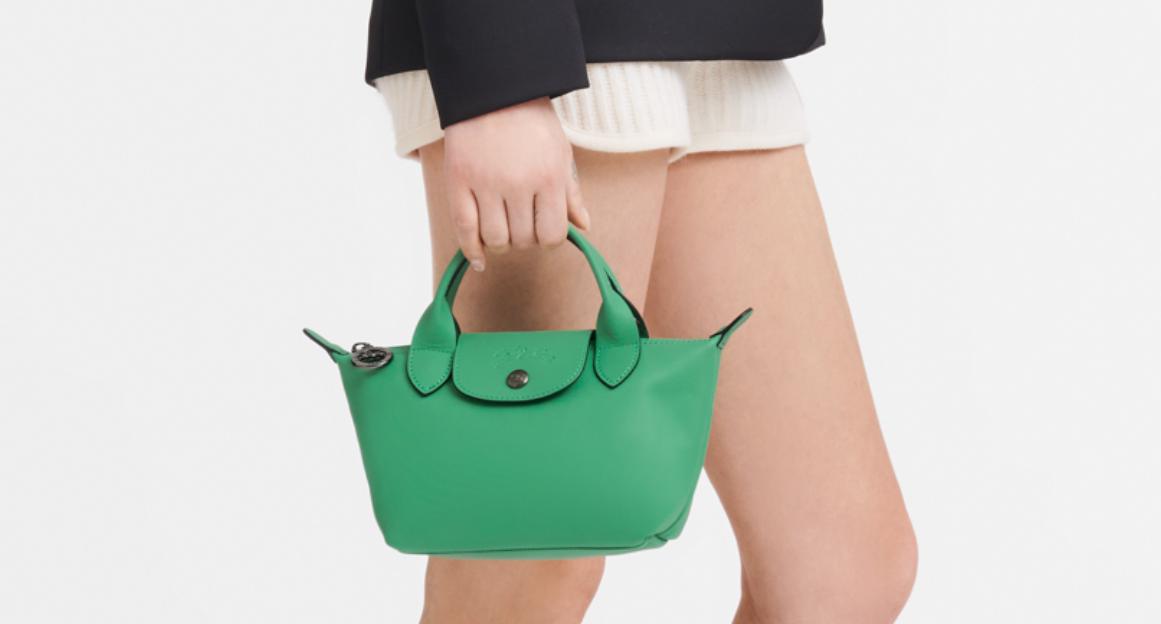Sustainable Style: The Rise of Eco-Friendly Handbags
Sustainable fashion has become one of the key themes in the fashion industry, especially when it comes to handbags. Consumer awareness about their contribution to environmental pollution is rising with every passing day and so is the demand for sustainable and ethically produced handbags. More than a trend, this signals a deeper commitment to conscious consumption and sustainability.
The French luxury brand Longchamp, with its signature Le Pliage bag, is a poster child for this movement. Longchamp has been working on introducing sustainable materials into its lines. It is now using sustainable materials — like recycled nylon and organic cotton — proving that luxury and sustainability can live together in harmony. This change is targeted not just at greener-minded buyers but helps lead the way for competing luxury labels.

Use of Sustainable Materials in the Production of Handbags
Sustainable handbag design begins with materials. The following are some of the trending sustainable materials in use:
- Organic Cotton: This is grown without the use of harmful pesticides and fertilizers often associated with conventional cotton. Biodegradable, and encourages more healthy ecosystems.
- Recycled Plastic: A lot of brands use recycled plastic in their designs now; many are even made from used plastic bottles. This helps to keep waste out of landfills as well as cut down on how much virgin plastic manufacturing is necessary.
- Econyl: A certified recycled polyamide (nylon). This material is sourced from waste such as fishing nets, carpets, and industrial remnants, providing a second life to these materials. The use of Econyl helps reduce environmental impact by recycling existing resources rather than relying on virgin materials.
Ethical Manufacturing Processes
Sustainable handbags should also use ethical manufacturing processes. Ethically focused brands focus on fair labor, making sure that their workers are being paid reasonably and are working under good safety conditions. Such attention towards transparency will not only lead to higher brand reputation but it will also help in gaining consumer trust too.
Most sustainable handbag brands also create their products locally, enabling them to keep the carbon footprint due to transportation low. These brands help contribute to the local economy and reduce the negative impact of fashion on the environment by using locally sourced materials and local artisans.
The choices you make can be environmentally conscious
One of the most significant contributors to the promotion of sustainability in the fashion industry is the consumers. So, here are a few tips to help you choose a handbag, which will be eco-friendly.
- Check brands: Search for brands that incorporate sustainability in their materials and production. Genuine sustainable products can be identified with certifications such as GOTS (Global Organic Textile Standard).
- Invest in high-quality handbags, preferably made of sustainable materials; they last longer and reduce the necessity of replacements when damages occur.
- Buy from local artisans: Local or humble brands generally uphold moral practices, and the transport emissions will be considerably lower too.
- Learn more: Know what environmental impact your purchases will have. Insight into the lifecycle of products can help guide consumer choice toward more responsible shopping.
Consumers can do their part for a greener future while also wearing beautiful accessories that express their personal style. Are you one of these consumers? Tell us how you contribute to environmental sustainability.